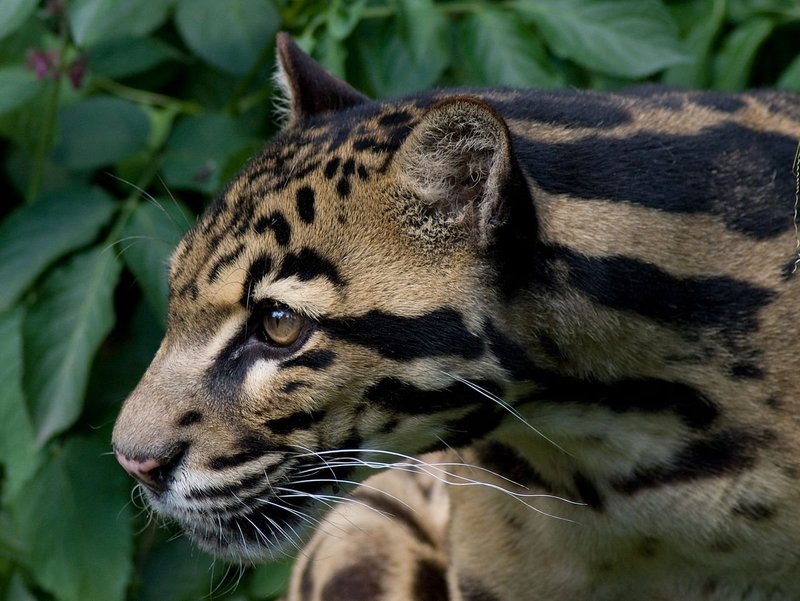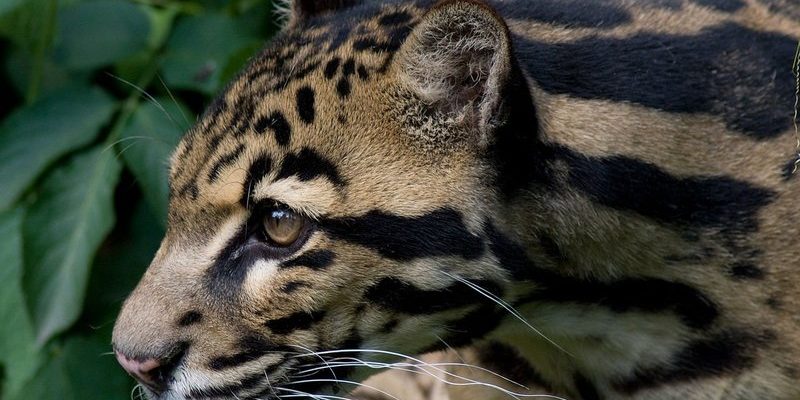
Just like the intricate tapestry of life within its forest home, the clouded leopard’s situation is complex. Let me explain: while they may seem like healthy populations exist in some regions, many factors threaten their survival. Habitat loss, poaching, and climate change are just a few of the challenges they face. Understanding these threats is crucial if we want to help protect these amazing animals and their ecosystems. In this article, we will unravel the clouded leopard’s status, the efforts for their conservation, and what we can do to make a difference.
What is the Clouded Leopard?
The clouded leopard (Neofelis nebulosa) is a stunning medium-sized wild cat known for its unique, cloud-like markings on its fur. These leopards have long bodies, short legs, and a relatively small head. Honestly, they look like they stepped right out of a storybook. The clouded leopard tends to thrive in the treetops of tropical rainforests in Southeast Asia, including countries like Thailand, Malaysia, and Indonesia.
One of the most fascinating things about the clouded leopard is its ability to climb. Unlike other big cats, they have flexible ankles that allow them to descend trees headfirst. This agility makes them amazing hunters, enabling them to stalk and ambush prey in their forest homes. They’re not just beautiful; they’re also incredibly skilled!
Additionally, clouded leopards are solitary animals. They prefer to roam and hunt on their own, marking their territories with scent glands. These behaviors contribute to their elusive nature, making them a challenge to study in the wild.
Are Clouded Leopards Endangered?
Unfortunately, yes—clouded leopards are currently classified as vulnerable by the International Union for Conservation of Nature (IUCN). Their population size is estimated to be between 1,000 and 10,000 individuals in the wild, but this number is becoming increasingly difficult to determine due to habitat fragmentation and other pressures.
Here’s the thing: many people might not realize that just because we can sometimes spot these creatures in national parks or reserves, it doesn’t mean they’re safe. The reality is that their habitats are constantly shrinking due to logging and agriculture. This loss not only affects their living space but also their food sources, leading to increased competition and stress.
Furthermore, clouded leopards are often caught in snares set for other animals, or they may fall victim to poaching for their beautiful pelts and bones. The fight for survival is real, and with every passing year, their numbers dwindle, pushing them closer to endangerment.
Causes of Endangerment
Understanding why clouded leopards are endangered is crucial for effective conservation. One major issue is deforestation. Massive logging operations and land being cleared for agriculture drastically reduce their habitats. These beautiful forests are not just homes for clouded leopards but also for countless other species, all interconnected in a delicate balance.
Another significant factor is poaching. Clouded leopards are hunted for their striking fur and body parts, often sold on the black market. Sadly, their beauty makes them prime targets. Even though laws exist to protect them, enforcement can be weak in many areas. For instance, in some regions, traditional beliefs about the medicinal properties of their bones further drives illegal hunting.
Finally, climate change plays a role too. As temperatures rise and weather patterns shift, suitable habitats may become unsuitable. This change can lead to food shortages and force clouded leopards into closer contact with humans, putting them at greater risk.
Current Conservation Efforts
Luckily, various conservation efforts are underway to protect clouded leopards and their habitats. Organizations like the Wildlife Conservation Society and Panthera are leading initiatives to promote awareness and protect these incredible creatures. They work on the ground to monitor populations, educate local communities, and implement anti-poaching strategies.
One effective method is establishing protected areas where clouded leopards can thrive without the threat of habitat loss. These areas not only benefit the leopards but also support a wide array of flora and fauna, maintaining the biodiversity of the region.
Additionally, conservationists are working to engage local communities. By showing people the benefits of preserving wildlife—like ecotourism—they can help shift mindsets and create stewardship for the environment. It’s about creating a win-win situation where locals see the value in protecting these stunning animals.
How You Can Help
You might be wondering how you can contribute to clouded leopard conservation from wherever you are. Well, every little effort counts! Here are a few practical ways you can get involved:
- Support Conservation Organizations: Donations to groups focused on wildlife preservation can directly impact conservation efforts. Look for reputable organizations dedicated to protecting clouded leopards.
- Raise Awareness: Share information about clouded leopards and their plight on social media. The more people know, the more pressure there is for effective conservation policies.
- Choose Sustainable Products: When shopping, opt for products that do not contribute to deforestation. Supporting sustainable brands helps protect the habitats of clouded leopards and many other species.
By being proactive and educating those around you, you can play a part in ensuring these beautiful cats have a future.
The Future of Clouded Leopards
So, what does the future hold for clouded leopards? While the situation is dire, there’s always hope! With concerted conservation efforts and increased awareness, we can make strides in protecting these fascinating animals. As habitats are restored and protected, we may see a gradual rebound in their populations.
It’s essential to remember that conservation is a long-term process. Many factors need to align for clouded leopards to flourish again. However, with continued support from individuals and communities worldwide, there’s a chance to turn the tide.
Let’s cherish these stunning cats and advocate for their existence. After all, every effort counts, and together, we can create a brighter future for the clouded leopard and its forest home.
In conclusion, understanding whether the clouded leopard is endangered goes beyond just knowing their status—it’s about recognizing the collective responsibility we have to protect this incredible species. From advocating for stronger protections to supporting local conservation efforts, every action matters. The beauty of the clouded leopard is truly worth fighting for, and with continued effort, we can ensure that future generations will know the majesty of these elusive cats.

